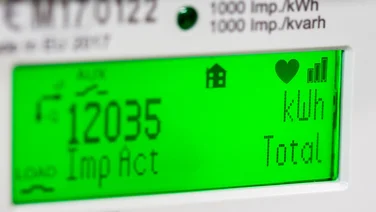- Households in the US will end up paying hundreds more for energy after Bill passed by Congress
- Clean energy industry slams bill for costing consumers and workers
- Boom in electricity demand might yet save clean energy

Household US energy bills could rise by as much as $400 a year as a direct result of Donald Trump’s so-called One Big Beautiful Bill Act, which was passed by Congress on 3 July 2025.
Described as ‘the most anti-environment Bill in history’, the legislation has stalled clean energy projects and taken away protections against polluting fossil fuel projects by removing tax credits that had been in the Inflation Reduction Act.
Having only passed the Senate by one deciding vote earlier in the week, it was approved by the Republican-held House of Representatives on July 3 2025. It is expected to add $3 trillion to the government’s deficit.
The legislation could start costing households as early as 2026 by removing support for solar panels, when it is expected to add $110 a year to bills, which will then rise to $400 by 2030, according to the Clean Energy Buyers’ Association (CEBA).

Get free solar panel quotes
Answer a few quick questions, and our trusted installers will send you bespoke solar panel quotes – for free.
As a direct result of repealing tax credits, US residential electricity prices will rise by as much as 7% from next year, with businesses seeing a hike of up to 10%.
The CEBA also says that grid capacity will shrink by 167 gigawatts (GW), which would have a knock-on effect on US manufacturing, which would see more costs passed on to consumers. Energy Innovation, a research firm, predicted the fall in network capacity would be as m
Speaking earlier in the year before the Bill was sent to the Senate, Rich Powell, CEBA’s CEO said weakening tax credits would “unequivocally mean higher electricity costs for US households and businesses”.
Prices, as well as US energy bills would, CEBA said, increase as extra pressure was placed on the energy grid, with some electricity costs spiking by as much as 30% in Midwestern states, such as Wyoming and Missouri.
The American Clean Power Association (ACP) agreed, saying that the legislation would restrict energy production and raise prices for American businesses and families, but also insisted that it won’t stop solar and wind energy being important to the US energy mix.
Describing the legislation as a “step backward”, the ACP said the “combination of surging demand for electric power and economic benefits of renewable energy” will ensure that “clean power will continue to play a significant and growing role”.
With the US’ electricity demand projected to grow by as much as 50% by 2040, the country will “require every available source of reliable power, including the clean energy technologies” that are the only “sources of additional power and the low-cost option”.
Clean energy in the US
- Wind and solar account for about 16% of US electricity generation.
- In 2024 the industry invested $80 billion to deploy 49GW, which was 93% of new electricity capacity.
- At present, 95% of projects in line to connect to the grid are wind, solar and storage, with about 2,000 GW queued up. The ACP describes this as “more than enough to meet the country’s needs”.
- US electricity demand is expected to increase by 35-50% by 2040, with new data centres alone set to require at least 100GW of new power.
- 1.4 million US jobs are supported by clean energy, with 460,000 directly and the remaining million in supply chains and related industries.
- Clean power manufacturing contributes $18 billion to US GDP and supports 122,00 jobs.






